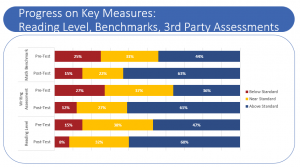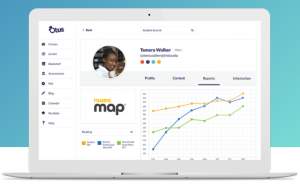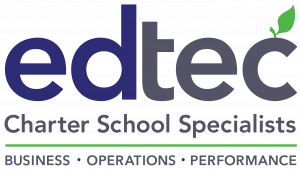by Guest Author
Ongoing Performance Monitoring to Drive Gains in Student Achievement
October 2020
EdTec’s charter school data and assessment experts support school leaders in developing plans to monitor progress on identified measurable outcomes, and schools that follow a defined process have shown considerable gains in student performance.
Amid all the uncertainty and unexpected changes this school year, it is important not to lose sight of your charter goals for academic achievement and student success, particularly given the current political climate. With some forward planning, you can keep your school on target by defining your measurable outcomes, monitoring progress, and regularly sharing results with your school community throughout the year to reinforce common goals.
Identify Key Measurable Outcomes
The first step is to identify the primary measurable outcomes for your school. This should include key statewide accountability measures such as state tests, English learner progress, chronic absenteeism, suspension rates, and graduation rates. For academic achievement, consider including measures that can be evaluated throughout the year as well, such as performance on common benchmarks or normed assessments, or measures of course performance like the percentage of students with passing grades in all core courses. Make sure to include measures that are representative of the unique qualities of your charter. For example, set college application or acceptance rates as a measure for a college preparatory charter, or student survey results if social-emotional growth and a positive school climate are a focus. And remember to engage your stakeholders – teachers, administrators, parents, students – to determine the best measures of success for your students.

Create a Cycle of Data Inquiry
Once your team has identified the key measures for your school, start to map out your calendar of when the data will be available and your schedule of reviewing progress with your stakeholders. The level of analysis will vary depending on the group but do your best to present the same measures to all stakeholder groups. For example, your teachers may take a deep dive into NWEA MAP performance, overall and by strand, for their whole class, groups of students and individual students. For your parents, it may be sufficient to let them know the MAP subjects tested and how students schoolwide are progressing towards an annual target. The frequency of review will also depend on the data type. Chronic absenteeism could be monitored monthly, grades by semester, benchmark tests after each administration, and graduation rates annually. Determine what measures make sense to share at different points throughout the year.
Define the Data Collection Process
The most complicated part of the process will be determining how you will collect data on key performance measures in a way that allows for a streamlined analysis. For some measures, it’s a matter of tasking a staff member to extract data from your existing systems on a regular basis, such as downloading a state test data file from its reporting system or aggregating attendance data from your student information system (SIS). For custom measures, it helps to house the data in a single online reporting system, such as Otus or Illuminate DnA. If you plan to collect information from each individual teacher, establish templates for data collection to make it easier to aggregate scores across classes.

Plan for Streamlined Reporting
Finally, think about how you plan to report the information. For example, if you want to know how many of your students are reading at or above grade level by the end of the year, do not just collect students’ raw scores on their reading assessments. Include a field in your template that translates the raw score to a proficiency score of Below Grade Level, Approaching Grade Level, or At or Above Grade Level, so you can easily see how many students are At or Above Grade Level. If you select NWEA MAP performance, it makes more sense to track progress towards a student’s growth target than it does to track whether the student is on grade level, since the system reports focus more on growth than grade level equivalents.
No matter what measures you select, make sure you can also disaggregate the data by significant student subgroups. This is easier to do if you store the data in a system such as Otus or Illuminate DnA, but this analysis can be done manually as well as long as all the data sources include a unique student identifier, such as the SIS student ID or state student ID. Performance of student subgroups can be a key factor in charter renewal decisions, and many charters excel in supporting historically disadvantaged student groups, so it’s good to stay on top of your progress.
EdTec’s data and assessment experts provide NWEA analysis services, Illuminate DnA implementation and customization support, as well as setup and licensing for the Otus Data, Assessment, and Learning Management solution at a low per-student cost. Additionally, we help charters to plan for stakeholder engagement meetings and to present outcome data to stakeholders, authorizers, and the community. If you’re interested in learning more about how we can support your school in these areas, reach out to us at assessment@edtec.com. You may also contact Annice Weinstein, Senior Manager, Assessment Data and Analysis at 510-936-1376.
About EdTec
Our mission is to drive quality in the charter school movement by providing the people, expertise, and systems that equip school leadership with operational support, business insights, and performance analyses to promote effective decision-making. EdTec provides charter schools with a comprehensive range of services in the areas of charter school application development, back office, school data and compliance, school software, and consulting. To learn more about EdTec and discuss how we can support your school, please email us at askus@edtec.com.
We are proud to be a member of GCSA and to support Georgia charter schools!
Otus logo and images are the property of Otus, LLC and reproduced with permission.
